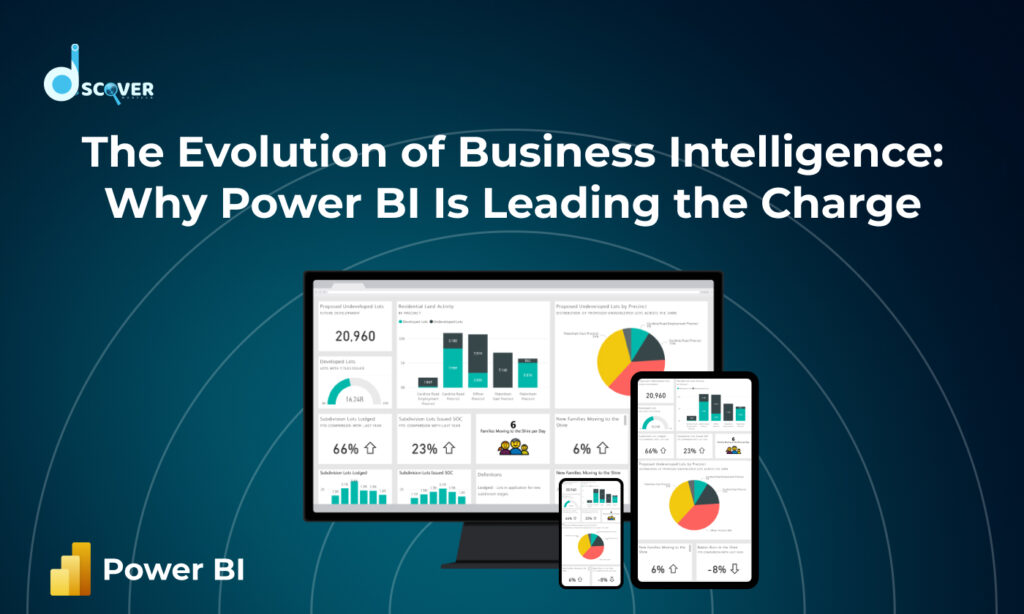
Over the years, the way businesses make decisions has changed big time — and it’s all thanks to smarter tools, faster data, and easier access to insights. One name that keeps popping up when we talk about modern data solutions? You guessed it — Power BI.In this blog, we’ll explore how business intelligence has evolved and why so many companies are now analyzing data with Microsoft Power BI. Whether you’re a beginner or someone considering a career in data, this one’s for you!
How Business Intelligence Has Changed Over Time
Not too long ago, getting reports from your company’s data meant waiting on IT teams, dealing with spreadsheets, and crossing your fingers for no errors. But those days are fading.
Now, we have tools that are easy to use, fast, and visually appealing. The best part? Anyone — not just tech experts — can use them to explore and understand data.
And leading this shift is Power BI, Microsoft’s powerful BI tool designed for everyone. The use of Microsoft Power BI makes it possible to connect data from anywhere and create smart dashboards with just a few clicks.
Why Power BI Is Ahead of the Game
So, what makes Power BI so popular and powerful?
- It works like a charm with other Microsoft tools like Excel, Teams, and Azure.
- It’s cost-effective, with free options and scalable pricing.
- It’s super user-friendly — you don’t need to be a data guru to use it!
The use of Microsoft Power BI has grown rapidly because it brings deep insights to the surface, helping teams make smarter, quicker decisions.
Powerful Features That Users Love
Let’s talk about what makes Power BI so feature-rich:
- You can pull in data from Excel, SQL, web apps — you name it.
- Create dashboards with stunning visuals and interactive charts.
- Ask questions in plain English and get real-time answers.
- Tap into AI features for even smarter reporting.
All these Power BI features make it easy to turn boring rows of data into real insights that matter.
Wondering: Is Power BI Part of Office 365?
Great question! A lot of people ask: “Is Power BI part of Office 365?” Here’s the scoop:
- You can get Power BI Free separately from Office 365.
- If you’re on an Office 365 Enterprise E5 plan, Power BI Pro is included.
- Want more performance? There’s Power BI Premium, which is a separate add-on.
So yes — Power BI is part of Office 365 for some users, depending on the plan. It’s a bonus if your company already uses Microsoft apps!
Do You Need to Know Coding to Use Power BI?
Another hot question: “Does Power BI require coding?” Nope — not for most things!
- You can use the drag-and-drop editor to build reports.
- With Power Query, you clean and shape your data without touching code.
- You might learn a bit of DAX (kind of like Excel formulas) if you want to go deeper.
So don’t worry — does Power BI require coding? Not unless you want to get fancy. For most users, no coding is needed at all.
When Do You Need a Power BI Consultant?
While Power BI is user-friendly, bigger companies or more complex projects often bring in a Power BI consultant. Why?
- They help with setup, best practices, and advanced modeling.
- They can create custom dashboards and reports that wow your stakeholders.
- They offer ongoing support and training.
If you’re serious about BI success, a little Power BI consultation can go a long way — saving time and helping you do more with your data.
What Are Power BI Measures and Data Flows?
Let’s break down two terms that come up often:
- Power BI measures are custom calculations you create in your reports (like totals, averages, ratios, etc.).
- Power BI data flow is how you clean and prep data in a reusable way — kind of like setting up a data pipeline once and using it again and again.
Both are powerful tools that help keep your reports clean, consistent, and insightful.
How to Build Dashboards Using Power BI Tools
Building a dashboard in Power BI is super satisfying — and not as hard as you might think. Here’s how to do it using Power BI tools:
- Open Power BI Desktop to create your report.
- Connect to your data sources — Excel, databases, or web apps.
- Use Power Query to clean your data.
- Add visualizations, charts, and filters.
- Upload to the Power BI Service and share with your team.
Learning how to Power BI build dashboard is one of the most valuable data skills today — whether you’re in marketing, finance, or operations.
Final Thoughts: Why Power BI is the Future of BI
We’ve come a long way from old-school spreadsheets and slow reporting tools. Today, it’s all about speed, visuals, and real-time collaboration.
Power BI brings all of that — and more — to the table. Whether you’re an analyst, a manager, or a small business owner, analyzing data with Microsoft Power BI gives you the power to make data-driven decisions without headaches.
As BI keeps evolving, Power BI will continue to grow, offering even more features, smarter tools, and better insights. So if you haven’t already, now’s the perfect time to dive in!
Contact us to know more about Data Visualization Services
Check out our latest blog on “Is 301 Redirect Good for SEO? Expert Guide with Examples, Tools & Google’s Advice”
FAQs
1. Is Power BI part of Office 365?
Yes, Power BI is part of Office 365 for users with specific plans like Office 365 Enterprise E5. Otherwise, it can be used separately.
2. Does Power BI require coding?
No, Power BI does not require coding for basic use. However, learning DAX formulas can help with advanced reports and custom calculations.
3. What are Power BI measures?
Power BI measures are custom calculations (like sums, averages, ratios) that enhance your reports and dashboards with deeper insights.
4. What is a Power BI data flow?
A Power BI data flow is a process that helps you clean, transform, and reuse data from multiple sources across different reports.
5. Can I build a dashboard without a Power BI consultant?
Yes! While a Power BI consultant can help with complex setups, beginners can still build dashboards easily using built-in Power BI tools.

